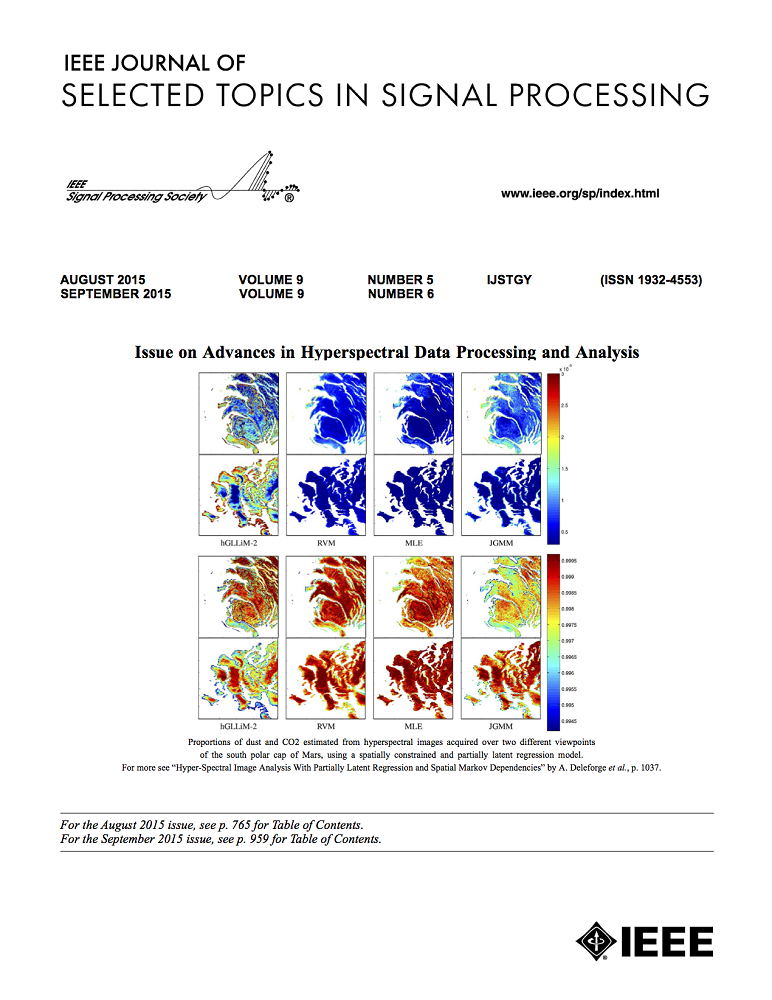Comparative Analysis of Terahertz Propagation Under Dust Storm Conditions on Mars and Earth
IF 8.7
1区 工程技术
Q1 ENGINEERING, ELECTRICAL & ELECTRONIC
IEEE Journal of Selected Topics in Signal Processing
Pub Date : 2023-06-13
DOI:10.1109/JSTSP.2023.3285450
引用次数: 1
Abstract
Reliable Terahertz (THz) links are necessary for outdoor point-to-point communication with the exponential growth of wireless data traffic. This study presents a modified Monte Carlo simulation procedure for estimating THz link attenuation due to multiple scattering by charged dust particles on the THz beam propagation path. Scattering models are developed for beams through dust, based on Mie and Rayleigh approximations for corresponding frequencies on Earth (0.24 THz) and Mars (0.24 & 1.64 THz). The simulation results are compared, considering parameters such as the number of Monte-Carlo photon (MCP) packets, visibility, dust particle placement density along the beam, frequency, and distance between the transmitter and the receiver. Moreover, a channel capacity model was proposed, considering THz link attenuation due to dust storms, spreading loss, and molecular absorption loss for Earth and Mars outdoor environments. Simulation results for Earth show that the link attenuation increases with dust particle placement density, distance, and frequency, and attenuation decreases with visibility and MCP packets. On Mars, similar results are obtained for both frequencies, except that the attenuation varies around a constant value with the frequency increase. Moreover, attenuation is slightly higher at 0.24 THz frequency compared to 1.64 THz when more dust particles are present on the beam propagation path. Channel capacity is estimated for Earth and Mars environments considering time and distance-dependent scenarios. Time windows that show a sudden drop of dust particles along the beam provide opportunities to communicate with high reliability. Moreover, increasing the distance between the transmitter and receiver severely reduces the channel capacity measurement in strong dust storm conditions in both environments. Our study has found that weak dust storms have relatively little effect on Mars but much more significant effects on Earth.火星和地球沙尘暴条件下太赫兹传播的比较分析
随着无线数据流量的指数级增长,可靠的太赫兹(THz)链路对于户外点对点通信是必要的。本研究提出了一种改进的蒙特卡罗模拟程序,用于估计由于带电尘埃粒子在太赫兹光束传播路径上的多次散射引起的太赫兹链路衰减。基于地球(0.24 THz)和火星(0.24和1.64 THz)上相应频率的Mie和Rayleigh近似,为穿过尘埃的光束开发了散射模型。考虑到蒙特卡罗光子(MCP)包的数量、可见性、尘埃粒子沿光束的放置密度、频率以及发射器和接收器之间的距离等参数,对模拟结果进行了比较。此外,还提出了一个信道容量模型,考虑了地球和火星户外环境中沙尘暴引起的太赫兹链路衰减、传播损耗和分子吸收损耗。对地球的模拟结果表明,链路衰减随着尘粒放置密度、距离和频率的增加而增加,而衰减随着能见度和MCP数据包的增加而减少。在火星上,两种频率都得到了类似的结果,只是衰减随着频率的增加而在恒定值附近变化。此外,与光束传播路径上存在更多灰尘颗粒时的1.64THz相比,0.24THz频率下的衰减略高。考虑到时间和距离相关的场景,估计了地球和火星环境的信道容量。显示尘埃颗粒沿光束突然下降的时间窗口提供了高可靠性通信的机会。此外,在两种环境中的强沙尘暴条件下,增加发射机和接收机之间的距离会严重降低信道容量测量。我们的研究发现,弱沙尘暴对火星的影响相对较小,但对地球的影响要大得多。
本文章由计算机程序翻译,如有差异,请以英文原文为准。
求助全文
约1分钟内获得全文
求助全文
来源期刊

IEEE Journal of Selected Topics in Signal Processing
工程技术-工程:电子与电气
CiteScore
19.00
自引率
1.30%
发文量
135
审稿时长
3 months
期刊介绍:
The IEEE Journal of Selected Topics in Signal Processing (JSTSP) focuses on the Field of Interest of the IEEE Signal Processing Society, which encompasses the theory and application of various signal processing techniques. These techniques include filtering, coding, transmitting, estimating, detecting, analyzing, recognizing, synthesizing, recording, and reproducing signals using digital or analog devices. The term "signal" covers a wide range of data types, including audio, video, speech, image, communication, geophysical, sonar, radar, medical, musical, and others.
The journal format allows for in-depth exploration of signal processing topics, enabling the Society to cover both established and emerging areas. This includes interdisciplinary fields such as biomedical engineering and language processing, as well as areas not traditionally associated with engineering.
 求助内容:
求助内容: 应助结果提醒方式:
应助结果提醒方式:


